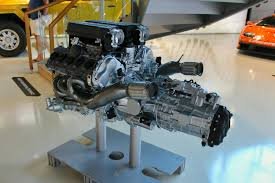There are several steps you want to take when mounting an engine on a stand so that the engine isn’t damaged. Using an engine stand allows you to see and repair the whole engine before placing it back into the vehicle. Due to the heavy weight of the engine, you want to stay safe while moving it. Here are a few steps to take when mounting an engine:
1. Preparing Your Workspace
When you’re ready to repair an engine, you want to make sure the space around the vehicle is clear. You need enough space for both the hoist and the engine stand. Check for any liquids or debris on the floor that could make the ground slick or unstable. You also want to double-check to make sure your engine stand is the right size for the engine you’re working on. Different sizes and weight limits apply, so having one that doesn’t fit may damage the engine and harm you.
2. Drain the Fluids From the Engine
Fluids inside the engine tend to make it heavier, but they may also slosh around inside and spill out onto the ground. This might also cause slipping hazards while you repair the engine. Drain the oil, coolant, and other fluids into drip pans or other containers and set them aside where they can then be disposed of correctly. New fluid is added once the engine is repaired.
3. Remove All Components From the Engine
Before removing the engine, take off the alternator, starter, exhaust manifold, or any other components that might cause problems. You need to be able to get a grip on the engine without parts coming loose in the process. Set those aside in a safe place as you prepare to lift the engine out of the vehicle.
4. Position the Engine Hoist Around the Engine
To transfer the engine to its engine stand, you use a hoist that will lift it from the vehicle. Place the hoist around the engine and make sure it’s a correct fit before attempting to lift. You can use a chain or sling, depending on the style of hoist you use and the weight of the engine. Lift it from the vehicle once it’s around the engine and everything is secured.
5. Make Sure the Stand Is Aligned With the Engine
As you hoist the engine out of the vehicle, you will move it toward the stand. Before mounting it, make sure that everything is aligned so the engine won’t come loose once it’s placed. There are bolt holes in the engine and the stand that need to match up. Adjust the arms until everything is set in place.
6. Mount the Engine on the Stand
Bolt the engine into the stand to secure it in place. The bolts need to be long enough and thick enough to pass through both the stand and the engine and hold the weight. When everything is secured, lower the hoist slowly as the stand takes on the full weight of the engine. You can then remove the hoist. Hamro Solar LLC
7. Recheck the Stability of the Stand and Engine
Once secured, recheck the stability to make sure nothing has moved and that the center of gravity on the engine is keeping it in place. Check all bolts and tighten them again so nothing comes loose. A stand with a rotating feature will help you move the engine into a position where you can work on it more easily. When you have it in place, lock the stand.
8. Begin Work on the Engine
After the engine is in place, you can begin your repairs or maintenance. Have your tools nearby so you can work quickly. Make the necessary repairs, periodically checking for loosening bolts. When you finish, you will use the hoist to carefully place the engine back into the vehicle. Add any components and fluids back into the engine.
Use a Quality Engine Stand in Your Shop
Engine stands can help with vehicle repairs when you might not be able to reach the correct spot otherwise. Using a hoist and checking that everything is in place and secure helps protect the engine. Having all your equipment and tools ready to use in one place can also help the repair go more smoothly. Contact a heavy-duty tools dealer today and ask about their engine stand options.
Brit is a passionate writer with a love for storytelling and exploring the depth of human experience through words. With a keen eye for detail and a thoughtful voice, Brit crafts pieces that resonate with readers and spark meaningful reflection. When not writing, Brit enjoys quiet moments with a good book, long walks, and finding inspiration in everyday life.






